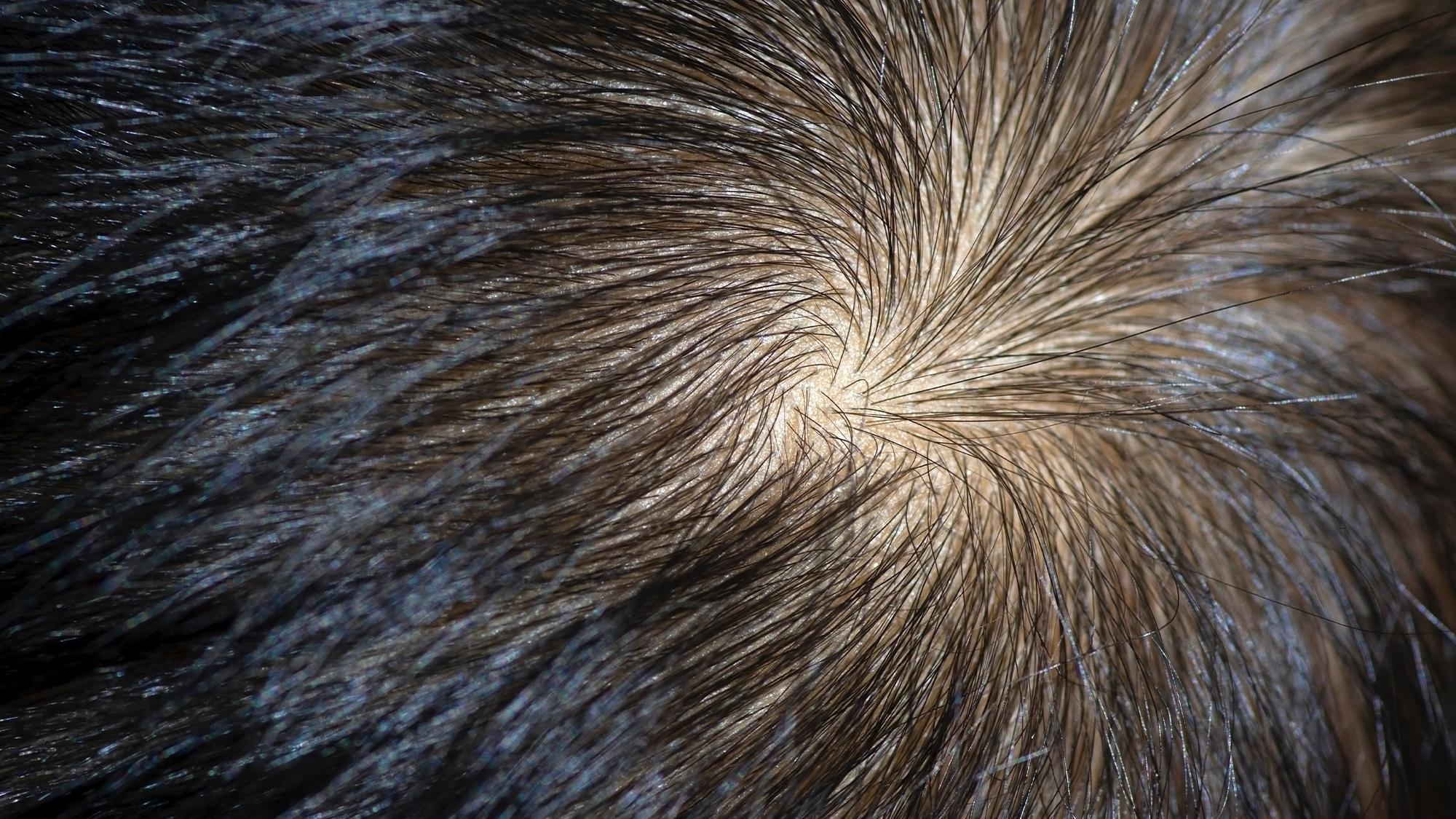

Bad hair days are simply part of life. Scientists are starting to figure out more about the science of luscious locks, such as the connections they have to our genes and other biological traits. Silver foxes could sport gray locks due to faulty stem cells, and better understanding the unique properties of curly hair could help create better hair care products.
[Related: What’s at the root of gray hairs?]
Now, a gene mapping study on human scalp hair whorls—a patch of hair growing in a circular pattern around a single point that is determined by the orientation of hair follicles—shows that these swirls have a genetic basis. The study published August 9 in the Journal of Investigative Dermatology found that hair whorls are affected by multiple genes and identified four associated genetic variants that potentially influence hair whorl direction.
Hair whorls are an easily observed human trait. Scalp hair whorl pattern is typically defined by either a single or double whorl and the direction of the whorl direction (clockwise, counterclockwise, or diffuse). Since atypical whorl patterns have been seen in some patients with abnormal neurological development, studying and understanding the genetic influence on whorl patterns may help scientists better understand some important biological processes.
“We know very little about why we look like we do. Our group has been looking for the genes underlying various interesting traits of physical appearance, including fingerprint patterns, eyebrow thickness, earlobe shape and hair curliness. Hair whorls are one of the traits that we were curious about,” study co-author and Chinese Academy of Sciences Sijia Wang said in a statement. Wang specializes in dermatogenomics.
In this genome-wide association study, the team used data on scalp hair whorls among 2,149 individuals from the China’s National Survey of Physical Traits cohort and was followed by a replication study of 1,950 individuals from the Taizhou Longitudinal Study cohort.
They found four associated genetic variants that are likely candidates for influencing hair whorl direction. They potentially do this by regulating the cell polarity of hair follicles, with closure of cranial neural tube growth within it also potentially playing a role.
[Related: The Roman Britons cared a lot about hair removal, and it shows in artifacts.]
“The prevailing opinion was that hair whorl direction is controlled by a single gene, exhibiting Mendelian inheritance. However, our results demonstrate that hair whorl direction is influenced by the cumulative effects of multiple genes, suggesting a polygenic inheritance,” said Wang
According to Wang, previous studies hypothesized associations between hair whorl patterns and abnormal neurological development, but this study did not find any significant genetic associations between the direction of hair whorls and any observable neurological, behavioral, or cognitive.
“Although we still know very little about why we look like we do, we are confident that curiosity will eventually drive us to the answers,” Wang concluded.
